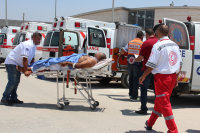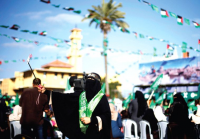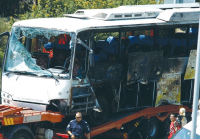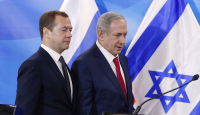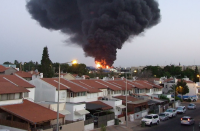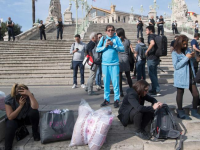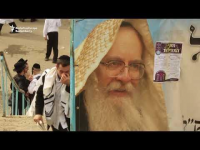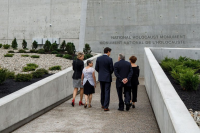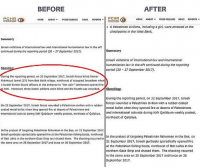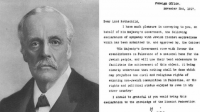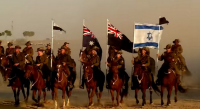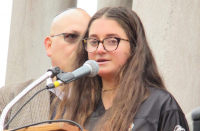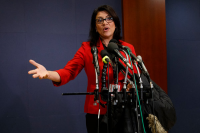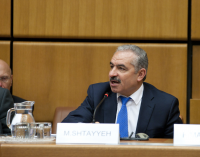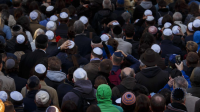
Links
Sheba Medical Centre
Melanie Phillips
Shariah Finance Watch
Australian Islamist Monitor - MultiFaith
West Australian Friends of Israel
Why Israel is at war
Lozowick Blog
NeoZionoid The NeoZionoiZeoN blog
Blank pages of the age
Silent Runnings
Jewish Issues watchdog
Discover more about Israel advocacy
Zionists the creation of Israel
Dissecting the Left
Paula says
Perspectives on Israel - Zionists
Zionism & Israel Information Center
Zionism educational seminars
Christian dhimmitude
Forum on Mideast
Israel Blog - documents terror war against Israelis
Zionism on the web
RECOMMENDED: newsback News discussion community
RSS Feed software from CarP
International law, Arab-Israeli conflict
Think-Israel
The Big Lies
Shmloozing with terrorists
IDF ON YOUTUBE
Israel's contributions to the world
MEMRI
Mark Durie Blog
The latest good news from Israel...new inventions, cures, advances.
support defenders of Israel
The Gaza War 2014
The 2014 Gaza Conflict Factual and Legal Aspects
To get maximum benefit from the ICJS website Register now. Select the topics which interest you.
The Islamic Armageddon Lies between Turkey and ISIS
ISIS leader Abu Baker al-Baghdadi's declaration of his caliphate poses a challenge to an opposing claim by the Ottomans' Turkish successors.
The mausoleum in Syria is located near a very sensitive site for ISIS and its theology, the Dabiq Valley. According to Muslim tradition, in the "End of Days" Dabiq will be the site of the "great battle" between Muslims and Christians.
ISIS' official magazine is named Dabiq. A recent cover showed the ISIS flag fluttering over the Vatican. Dabiq calls on the young Muslims of Europe to migrate to the Islamic State and from there to disseminate Islam.
The fiery execution of a Jordanian pilot and the beheading of Copts on a Libyan beach are laden with Islamic symbolism for ISIS.
Turkey sent a large armed force 23 miles into Syria on February 21, 2015, to a tiny enclave containing the mausoleum and body of a revered Ottoman leader who lived almost 800 years ago. The region is controlled by ISIS, but that didn't stop Syria from labeling the incursion a "Turkish invasion." The force rescued a Turkish squad guarding the gravesite, destroyed the mausoleum and brought the remains of Suleyman Shah back to Turkey. Suleyman was the grandfather of Osman I who founded the Ottoman Empire in 1299.
The military raid and rescue of an early Ottoman ruler's remains underscore the Turkish government's dream of restoring the Ottoman Empire. If it could not protect such a symbol of the vaunted empire just a few kilometers from its border, how could it aspire to again rule the Fertile Crescent, Egypt, North Africa and the Balkans?
With its practice of destroying sacred burial sites, ISIS threatened the historic Ottoman mausoleum and put to the test the unwritten alliance between Turkey and ISIS. Abu Baker al-Baghdadi's declaration of his caliphate poses a challenge to the caliphate claim of the Ottomans' Turkish successors.
Significantly, the Suleyman Shah burial site is located near a very sensitive site for ISIS and its theology, the Dabiq Valley.
Dabiq is a small town north of Aleppo on Syria's border with Turkey and is also the name chosen by the Islamic State for its official magazine - Dabiq.1 The terrorist organization's choice of the name and the magazine's contents indicate the nature and aims of the caliphate organization.
First of all, the name. Why Dabiq? There are two interrelated reasons. Dabiq was the site of the battle of Marj Dabiq on August 8, 1516 when the Ottomans defeated the Mamluks, who had ruled Syria and the Hijaz [the western part of the Arabian Peninsula] from Egypt. It was there that an era of five hundred years of Ottoman rule over the Fertile Crescent, the Hijaz, and Egypt began.2 No less important, coincidentally, a hadith - an oral tradition - in the name of the Prophet was issued declaring that at the "End of Days" Dabiq will be the site of the "great battle - Al-Malhama Al-Kubra" - between Muslims and Christians. It will end, of course, with the victory of Islam and its conquest of Europe.3
The Islamic State chose this name because of both of these connotations: the apocalyptic nature of its mission and the preparation for the End of Days and the final defeat of Christianity. Moreover, according to Dabiq Magazine, none other than Jesus, son of Mary, 4 will lead the Christian armies against "the best of the Nation of Islam," who will come from Medina. Dabiq, then, is actually Islamic State's version of the Christian apocalypse at Armageddon (Mount Megiddo).
The Islamic Armageddon Lies between Turkey and ISIS
The circumstances of the battle of Dabiq between the Ottomans and the Mamluks bear implications for the present. The events that led to the war began with a Portuguese threat to the Hijaz and the Egyptians' appeal to Shi'ite Persia for help.
The Turkish Sultan, Selim I, regarded the Persian Shiites as a cardinal danger and warned the Mamluks against making an alliance with them even against the Christians. He suspected that the Mamluks would also seek allies in Christian Europe, and when the Mamluks did not heed him, he thwarted an alliance between them and the Shiites.5
The lesson for our days is clear. The Mamluks of Egypt are analogous to the Muslim Brotherhood, who are prepared to make alliances both with the Shi'ites of Iran and Europe in the framework of "political Islam," and hence constitute an enemy along with Europe.
The main thrust of the message, however, is against Europe and the Christians of the Middle East. The journal appears online in English; its "Western" design features attractive, colorful graphics, and its admonitions are directed at the Muslims of Europe. A main motif is the Hejira [emigration]. Just as the Muslim dating begins with the migration of the Prophet Muhammad and his band of followers from the heretical Mecca to Medina, which opened its door to Islam and from which its expansion began, so the young Muslims of Europe are called upon to migrate to the Islamic State and from there to disseminate Islam. This is a missionary admonition that entails a return to religion for the young Muslims of Europe who have grown distant from Islam. The Islamic State is said to be encouraging such a trend among frustrated Muslim youth in European prisons.
One of the first articles in Dabiq dealt with an event from Muhammad's era known as Mubahala. The word refers to a mutual cursing; the event itself, described in the Koran, is unclear. The tradition tells of a delegation of Christians from Najran, a city on the Hijaz's border with Yemen, who came to the Prophet in Medina and, instead of accepting Islam, tried to convert him to Christianity. The implication is clear: the Christians of the Arabian Peninsula rejected the Prophet's invitation to Islam and added insult to injury by trying to persuade him to convert. This event forms the basis for the forced conversion of eastern Christians in Muslim lands.
The barbaric massacre of the Copts in Libya must be understood in this light. In the Mubahala incident, the Christians of the east squandered the opportunity to become part of Islam. The choice of the Libyan coast as the location of the massacre, however, expresses a different theme as the Islamic State casts its gaze toward Rome. The part of Libya closest to Italy is its coast, and the message was directed northward - toward the Vatican.
That message was already conveyed in the fourth issue of Dabiq. Whereas the first issue was devoted to the significance of the caliphate, the front page of the fourth issue showed the flag of the Islamic State on the obelisk of St. Peter's Square.6 Again the religious basis lies in the old tradition of Dabiq; the town is located at the border of today's Turkey and, hence, is close to Constantinople [now Istanbul]. The Prophet said that the capital of Byzantium will be conquered first, and after it Rome. Once Istanbul is in the hands of Islam, the capital of Catholicism will be next in line.
The implication regarding Turkey is unclear. Does the fact that Istanbul is already within the Muslim territory mean it is already "conquered," or, instead, that the current government of Turkey is not sufficiently "Muslim" and, hence, that the conquest of Constantinople on the way to Rome is still required?
Dabiq does not go into that matter because Islamic State has special ties with Turkey.7 Nevertheless, Turkey is affiliated with the Muslim Brotherhood camp, which Dabiq loathes. From the standpoint of the Islamic State's magazine, even Al-Qaeda leader Ayman al-Zawahiri is a Muslim Brother and does not belong to the category of Al-Qaeda,8 and there is a direct attack on the alliance between him and deposed President Morsi.9 Both of them are unacceptable to Dabiq for two reasons: they are "weak," and they are suspected of ties with the West, just as the Mamluks were suspected in a similar context.
There is an indirect threat to Saudi Arabia.10 The reference to Medina as the place from which the Muslim army proceeded to Dabiq to defeat Christianity signifies that the way to Dabiq passes through the Hijaz.
There is only minor reference to Israel, however. The liberation of the Al-Aqsa Mosque will come after the war of the End of Days in Dabiq.11 Quite surprisingly - so far at least - there is no mention of Mohammed's massacre of the Jews in Medina; instead, the main topic is the war on the Christians.
The transfer of Armageddon to Dabiq in Syria also implies a distancing from Israel.
To sum up, on the one hand, the official magazine of the Islamic State propagates apocalyptic messages about the end of history and Islam's defeat of Christianity; on the other, it conveys more specific points mainly involving opposition to any ties between the Sunnis and the Shiites or between them and the Christians. Both are unacceptable to the same degree.
The Islamic State's apocalyptic nature is also significant in terms of the Middle Eastern nuclear arms race - in case Iran reaches the nuclear threshold. Nuclear weapons possessed by a Muslim state could fall into terrorist hands. Dabiq makes clear that if such terrorists should have a bomb, they will launch it at Europe.
That is not a guess. The burning of the Jordanian pilot is related to a tradition of the burning of the Christian armies in the apocalyptic war at Dabiq - as we see in this picture from the first issue.
The fifth issue12 quotes the real founder of the Islamic State, Abu Musab al-Zarqawi, as saying: "The spark began here in Iraq, and will grow in strength until it burns the Crusaders at Dabiq."
The burning of Moaz al-Kasasbeh, the Jordanian pilot, was the sales promo for the burning of the Christian armies at Dabiq on the way to Rome - and from there to the burning of all of Europe.
Editor's note: The ISIS flag shows the signet ring of Mohammed with the words "Allah, Mohammed, messenger." The ring - or its replica - was kept by the Ottoman Sultans in the Topkapi Museum in Turkey.
* * *
Notes
1 http://www.clarionproject.org/news/islamic-state-isis-isil-propaganda-magazine-dabiq
2 http://all4syria.info/Archive/195326; http://ar.wikibooks.org/wiki/%D8%AA%D8%A7%D8%B1%D9%8A%D8%AE_%D8%A5%D8%B3%D9%84%D8%A7%D9%85%D9%8A/%D8%B9%D8%B5%D8%B1_%D8%A7%D9%84%D9%85%D9%85%D8%A7%D9%84%D9%8A%D9%83/%D9%85%D8%B1%D8%AC_%D8%AF%D8%A7%D8%A8%D9%82
3 http://ejabat.google.com/ejabat/thread?tid=1e2234a44eb2c9a4 This website of the organization, which provides answers to theological questions, also explains why its members wear black uniforms: it is the color of the uniforms of the army of Islam in the war of the End of Days against Christianity. When there were reports that the coalition against Islamic State had threatened a ground war against the organization, the Islamic State replied: "We will meet in Dabiq," http://thiqah1.com/news/528
4 https://www.facebook.com/marjdabiq/posts/297669383613442
5 http://media.clarionproject.org/files/09-2014/isis-isil-islamic-state-magazine-Issue-3-the-call-to-hijrah.pdf ;http://ar.wikipedia.org/wiki/%D9%85%D8%B9%D8%B1%D9%83%D8%A9_%D9%85%D8%B1%D8%AC_%D8%AF%D8%A7%D8%A8%D9%82
6 http://media.clarionproject.org/files/islamic-state/islamic-state-isis-magazine-Issue-4-the-failed-crusade.pdf
7 Turkey buys from Islamic State the oil that it controls, http://www.al-monitor.com/pulse/tr/business/2014/06/turkey-syria-isis-selling-smuggled-oil.html# Sources in the Syrian opposition conveyed orally that Islamic State provided food to the Turkish emergency force that was stationed in a mausoleum. Eventually, though, information reached Turkey that Islamic State was planning to destroy the site. http://www.al-akhbar.com/node/226718
8 http://eldorar.com/node/66588
9 http://www.eanlibya.com/archives/30161
10 http://media.clarionproject.org/files/islamic-state/isis-isil-islamic-state-magazine-issue-5-remaining-and-expanding.pdf. The fifth issue of Dabiq features a picture of the Kaaba in Mecca, but there is no direct mention of the House of Saud.
11 https://twitter.com/89abuhajar/status/542751192816709632 These points are not made in Dabiq but rather on the social networks.
12 http://media.clarionproject.org/files/islamic-state/isis-isil-islamic-state-magazine-issue-5-remaining-and-expanding.pdf
Publication: Jerusalem Issue Briefs
Filed Under: ISIS, Radical Islam, Terrorism, The Middle East, Turkey
Tags: Armageddon
About Pinhas Inbari
Pinhas Inbari is a veteran Arab affairs correspondent who formerly reported for Israel Radio and Al Hamishmar newspaper, and currently serves as an analyst for the Jerusalem Center for Public Affairs.
- See more at: http://jcpa.org/article/islamic-armageddon-turkey-isis/#sthash.UENmJKmy.dpuf
# reads: 619
Original piece is http://jcpa.org/article/islamic-armageddon-turkey-isis/

